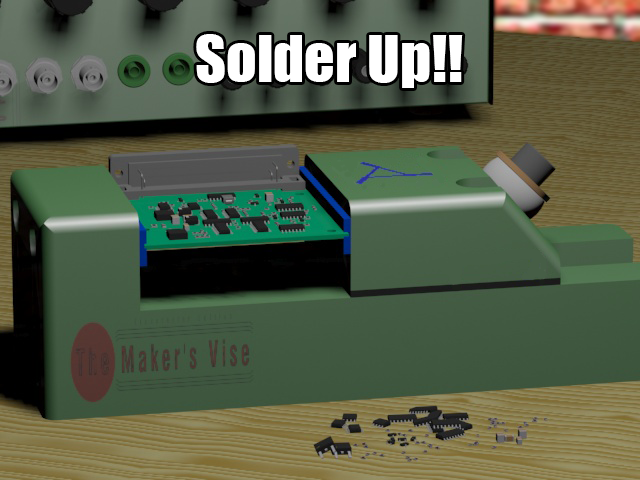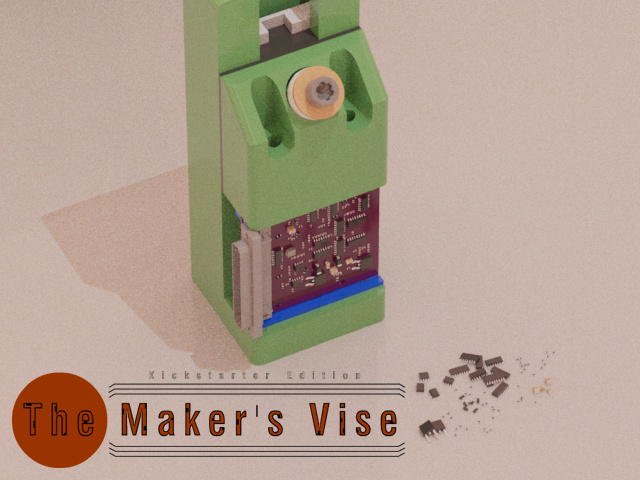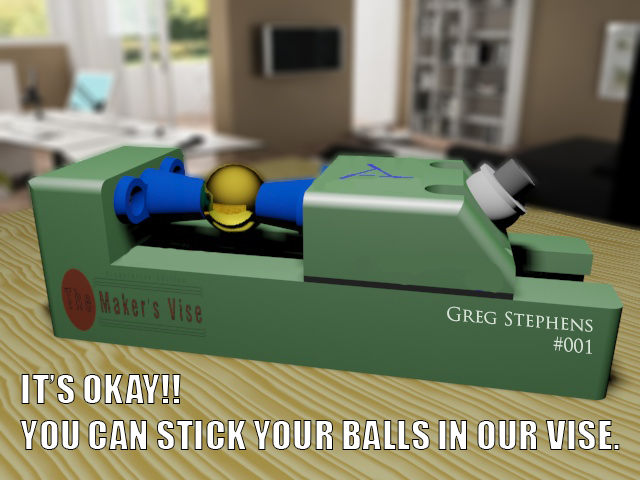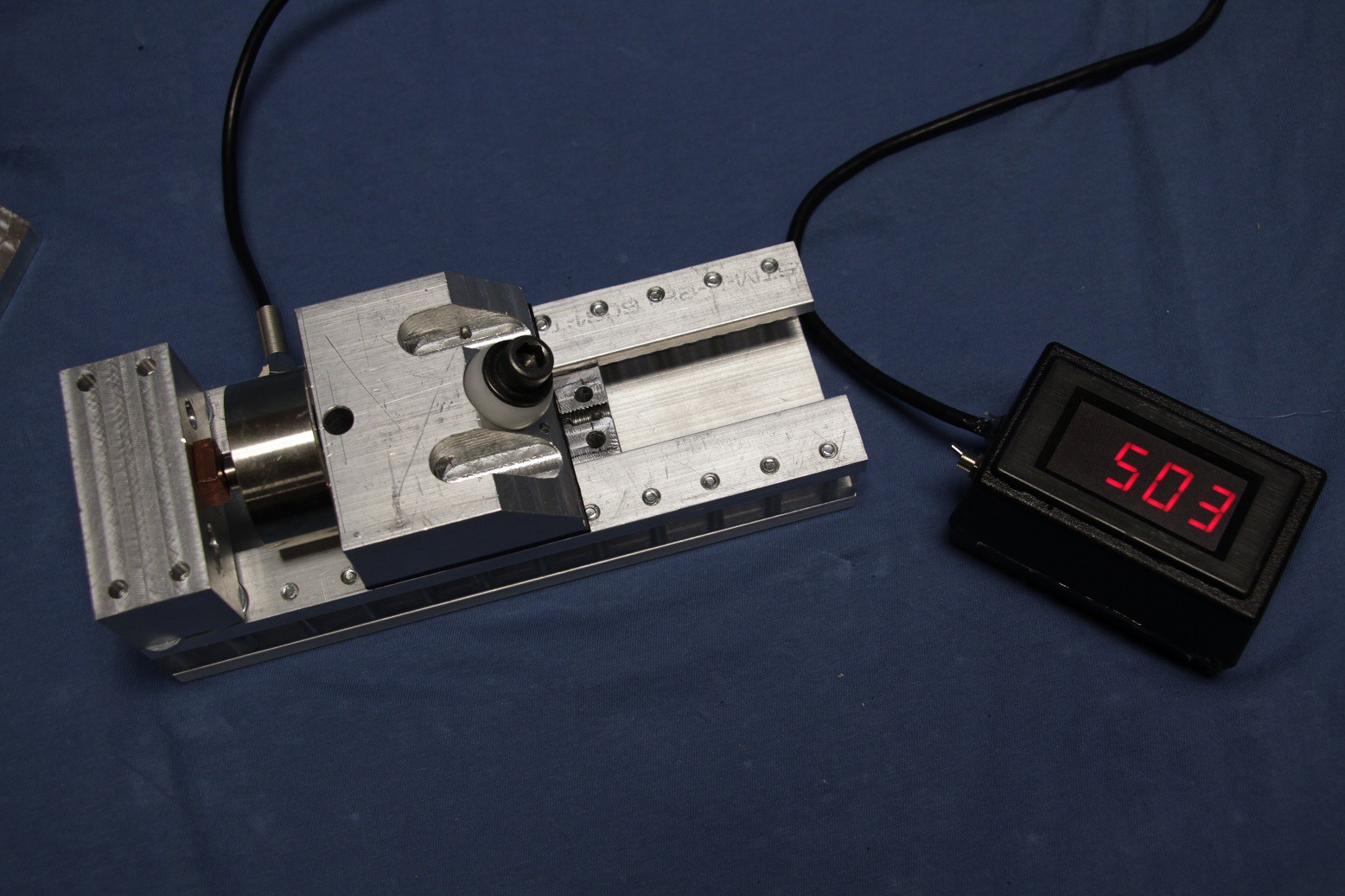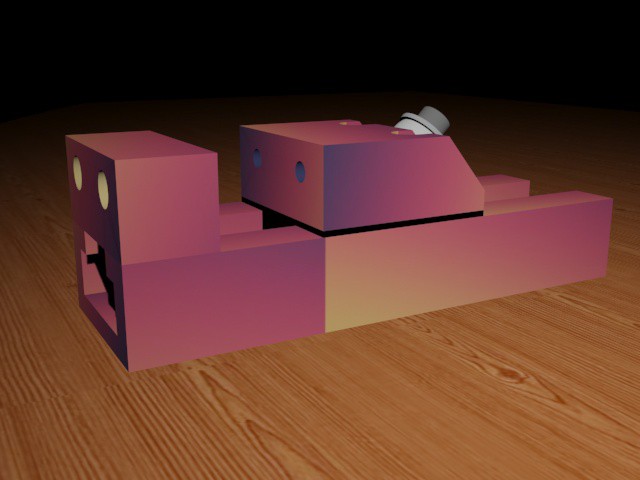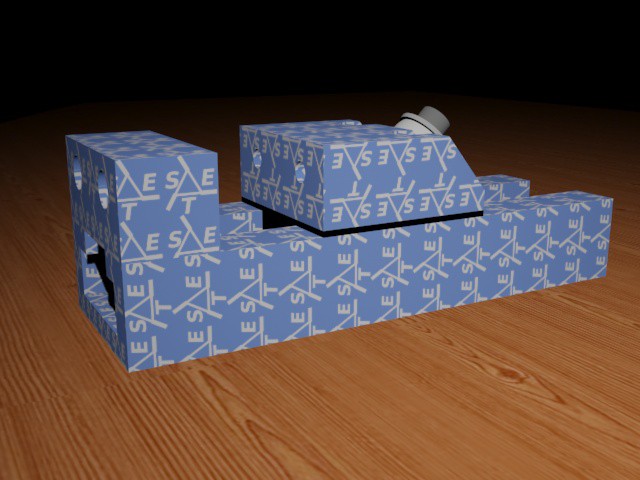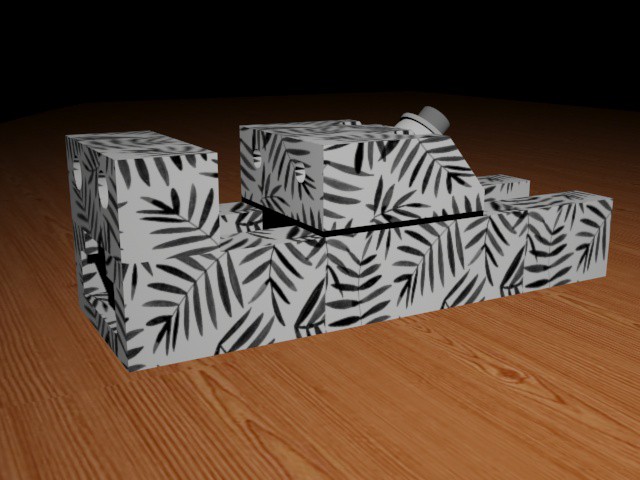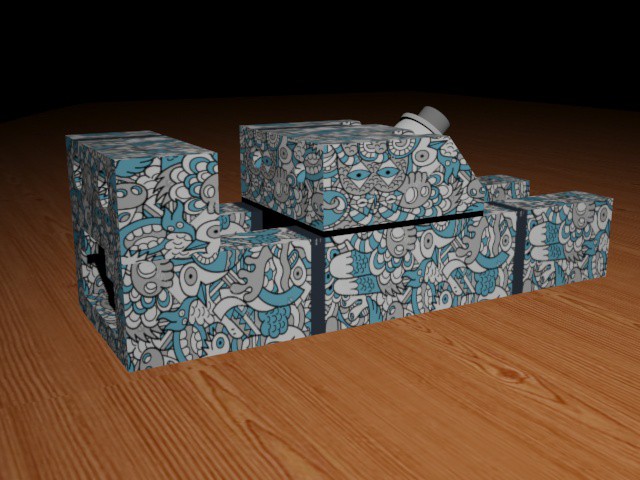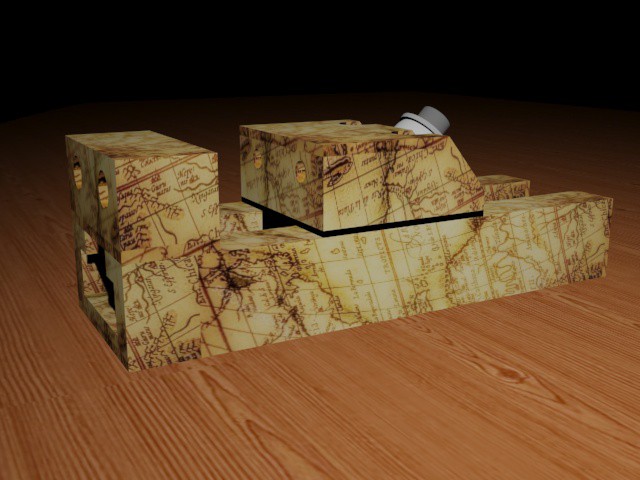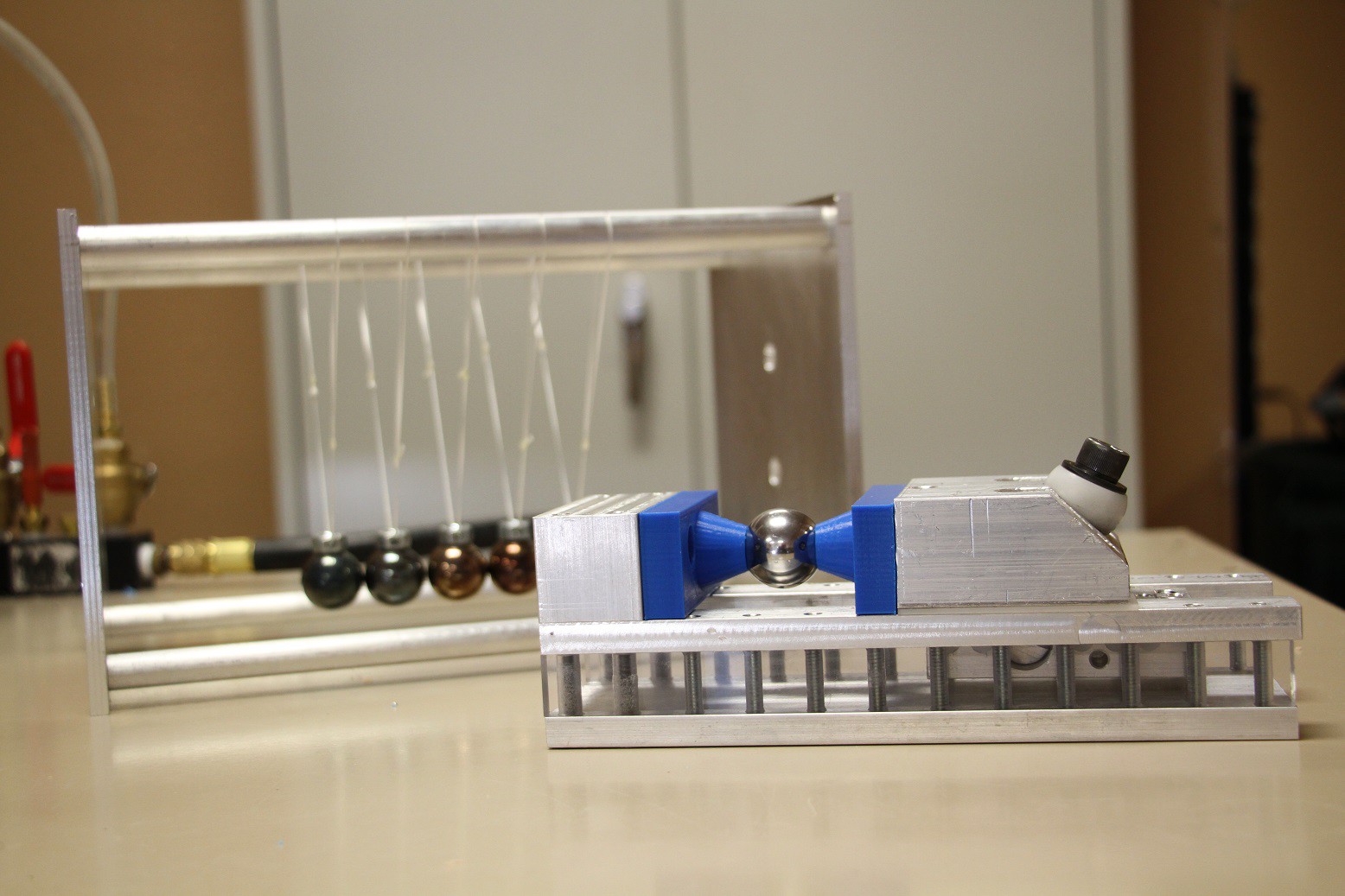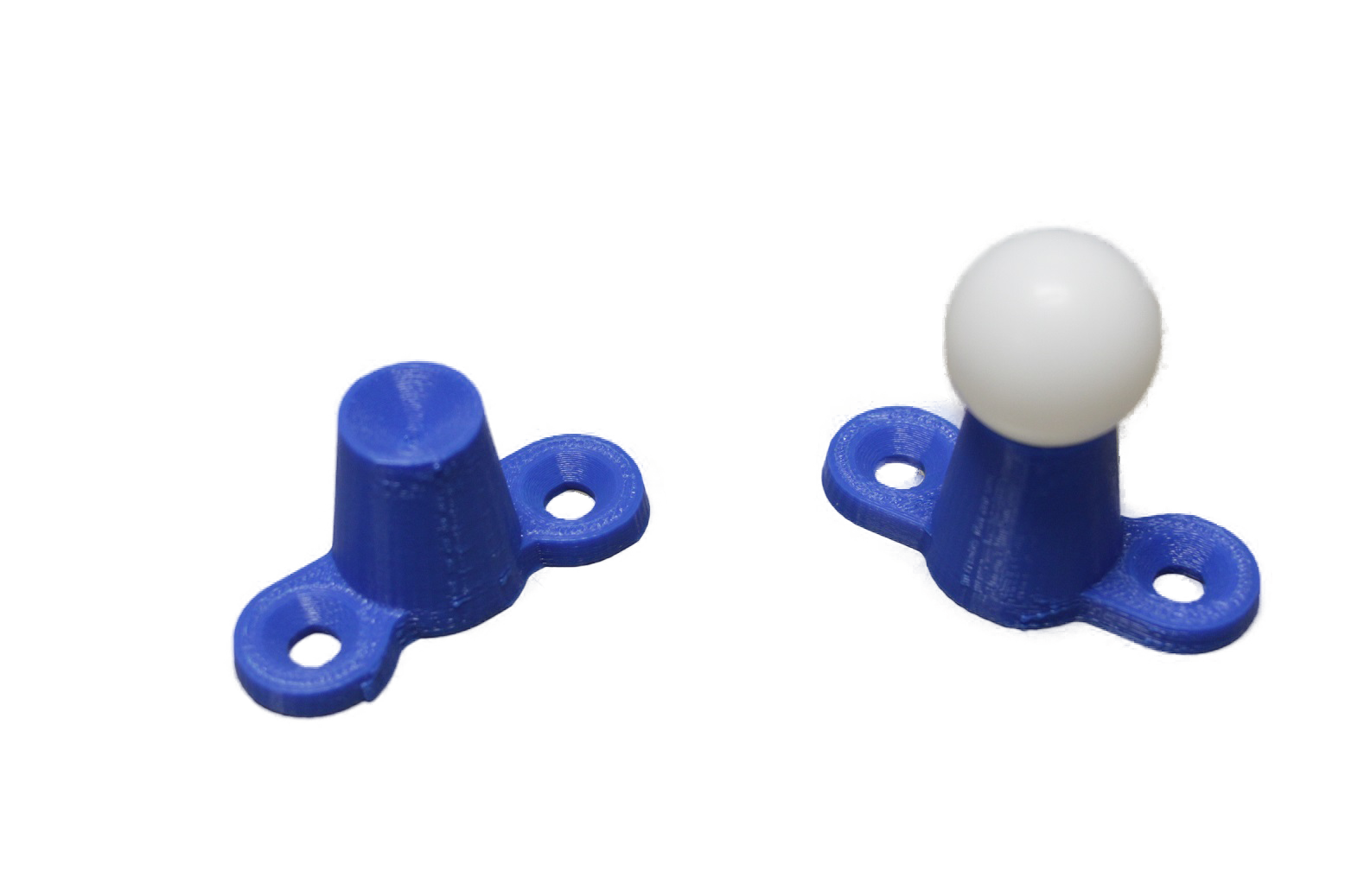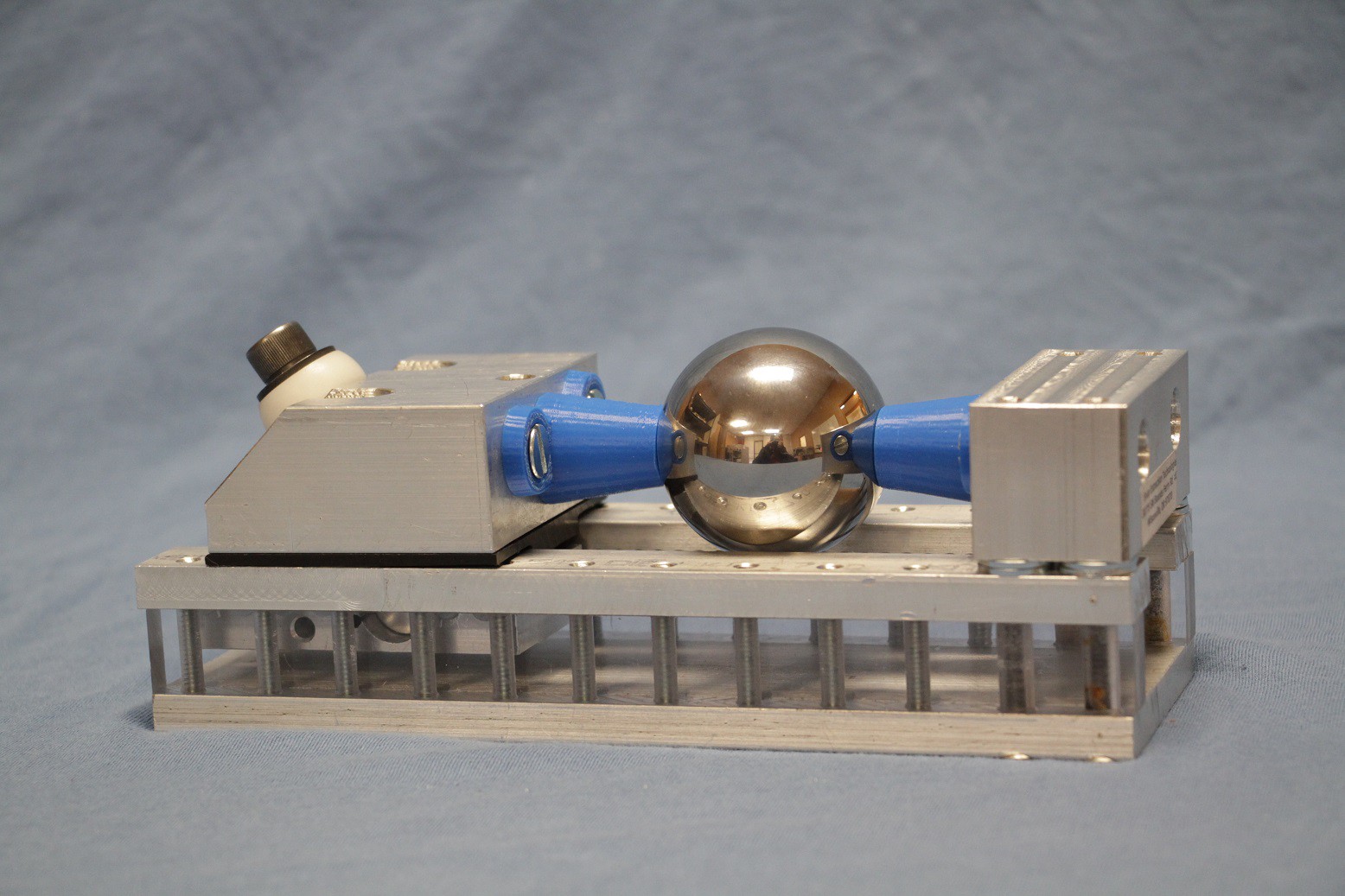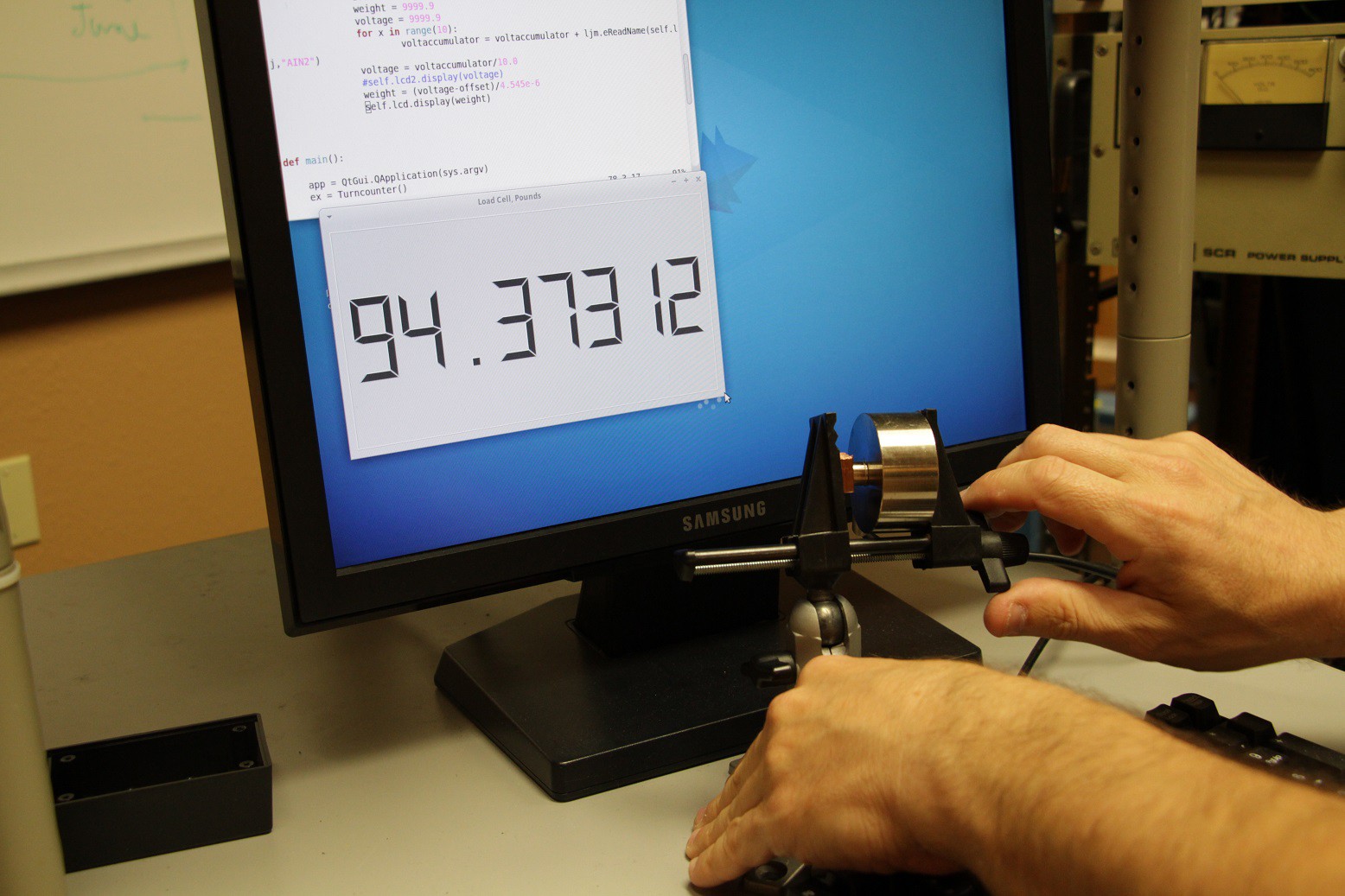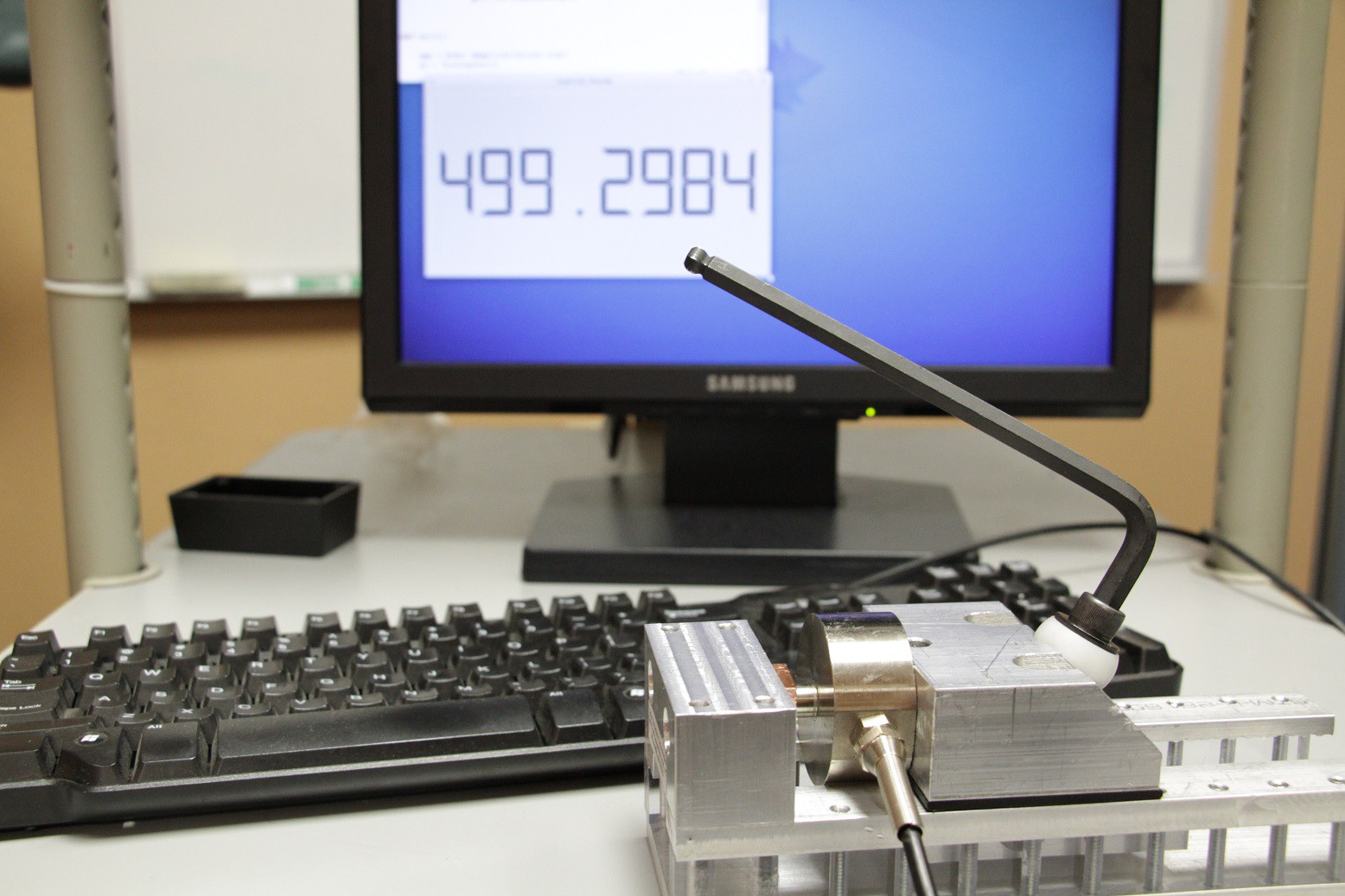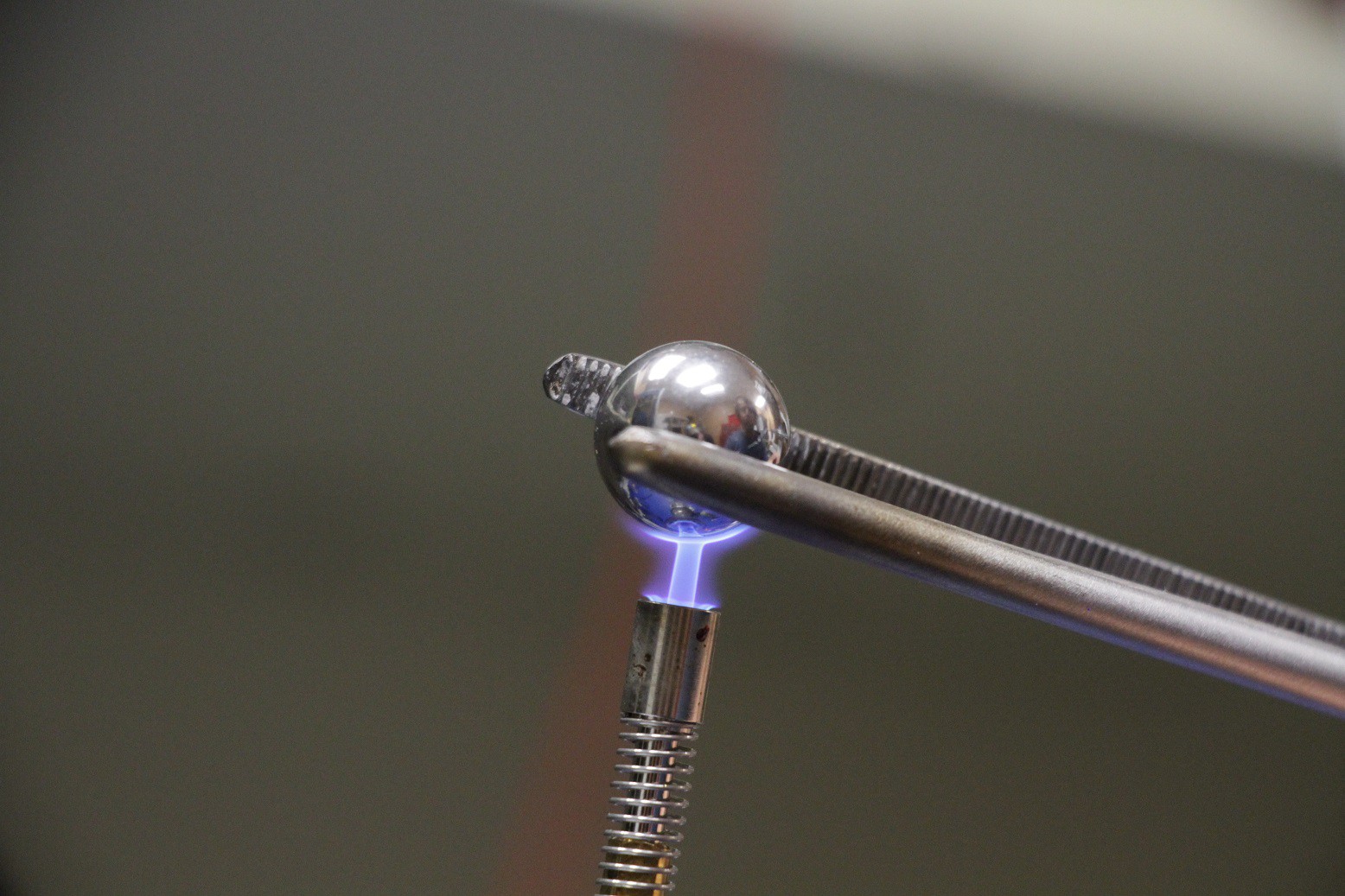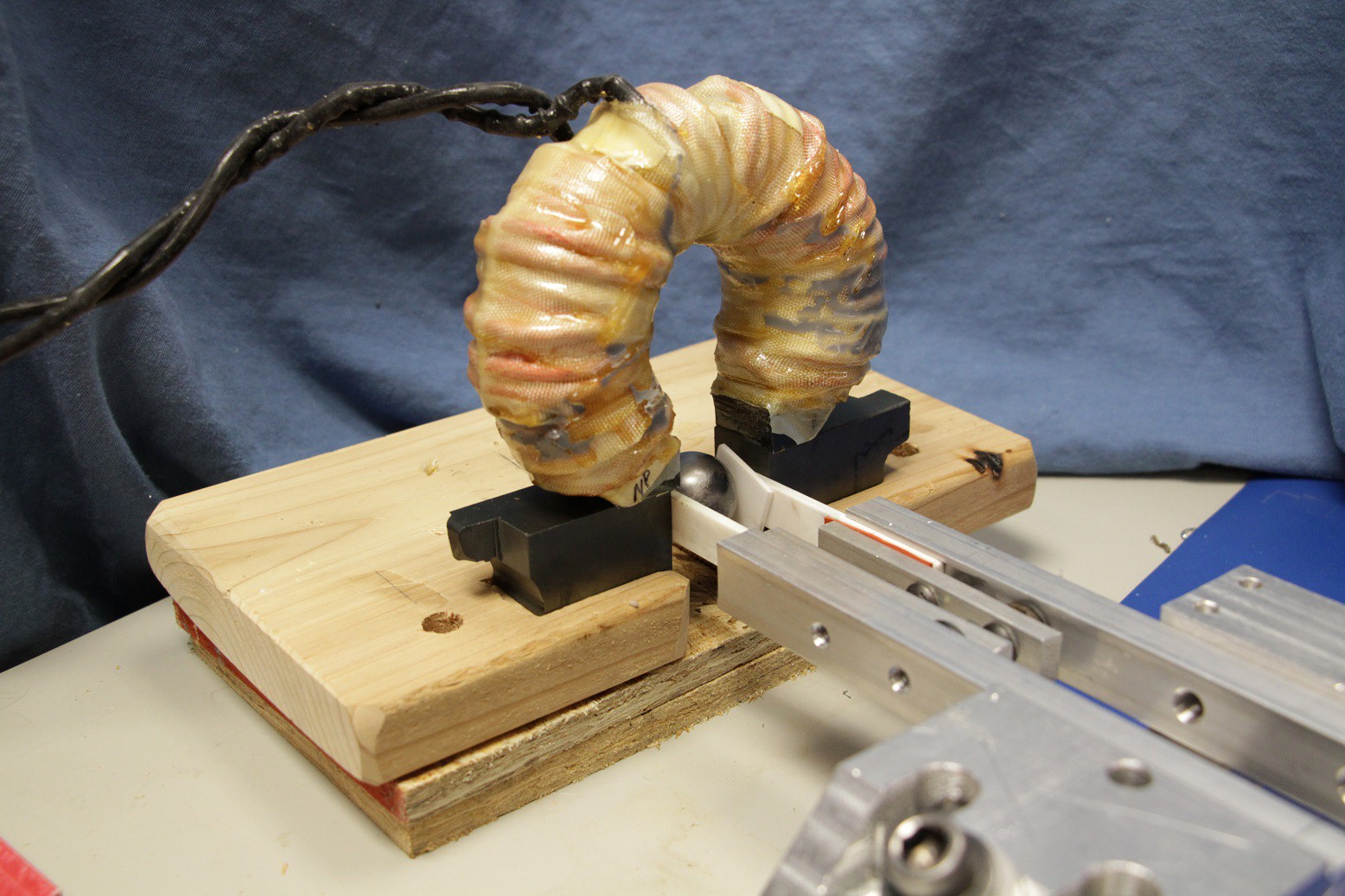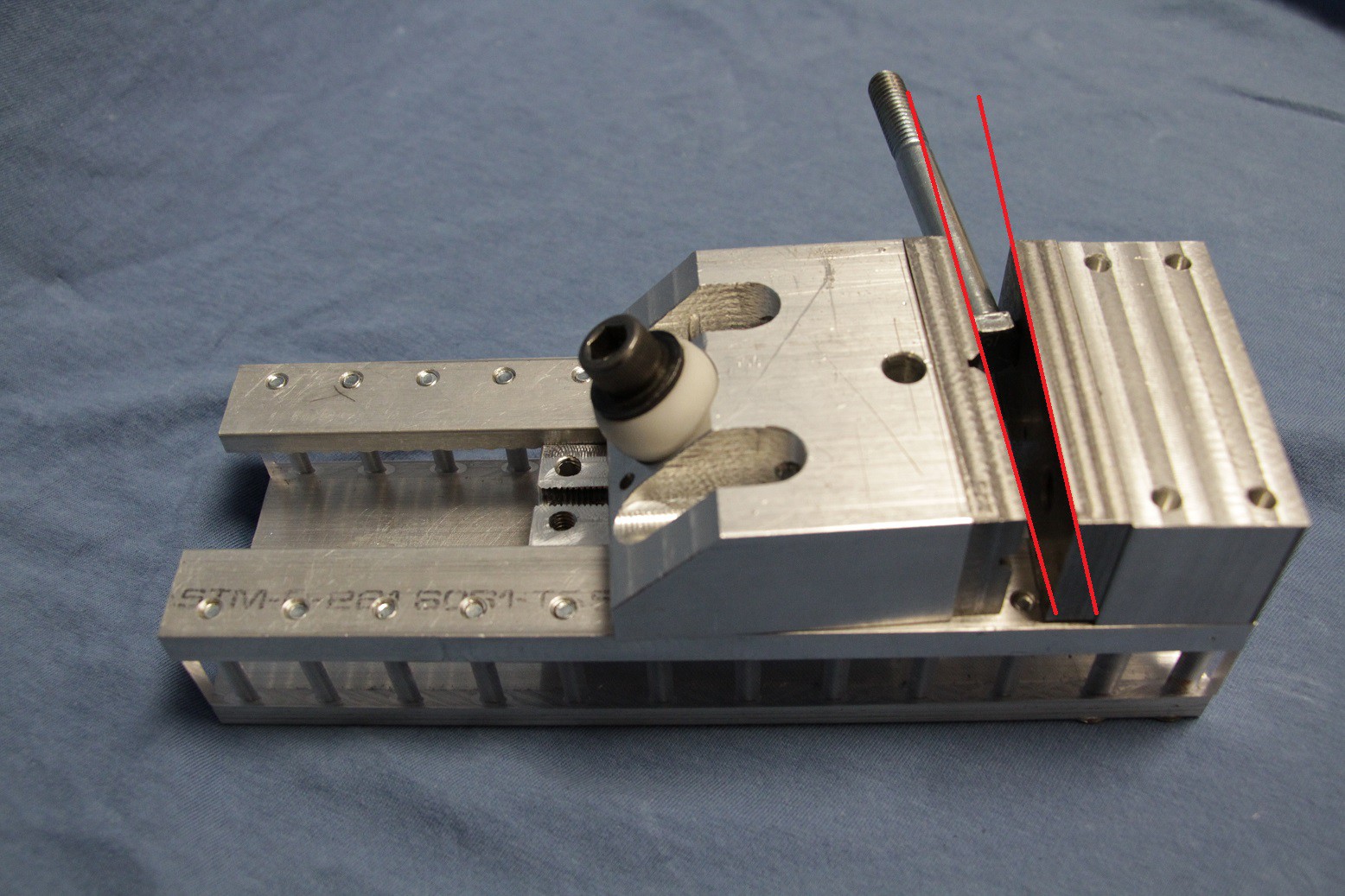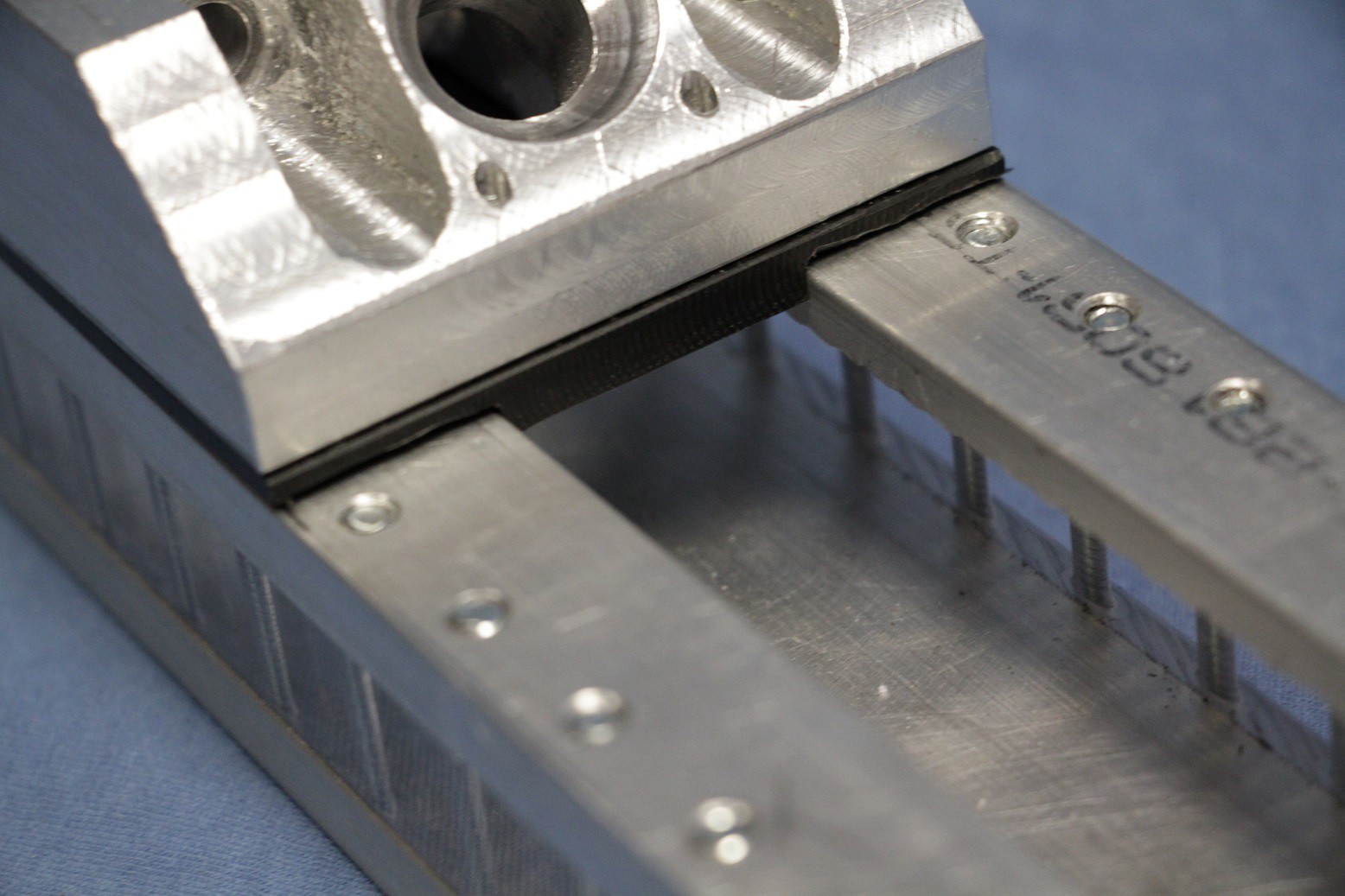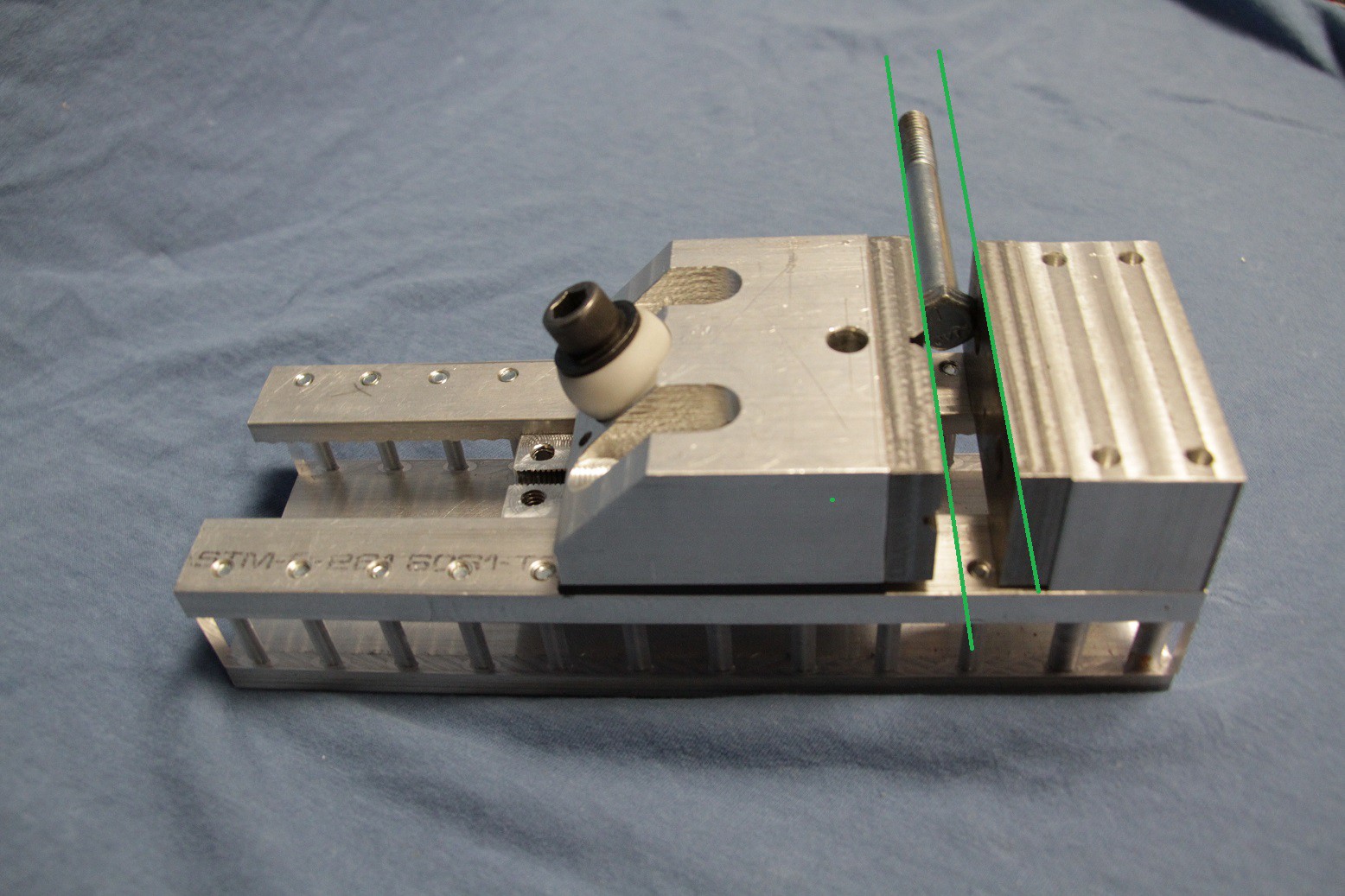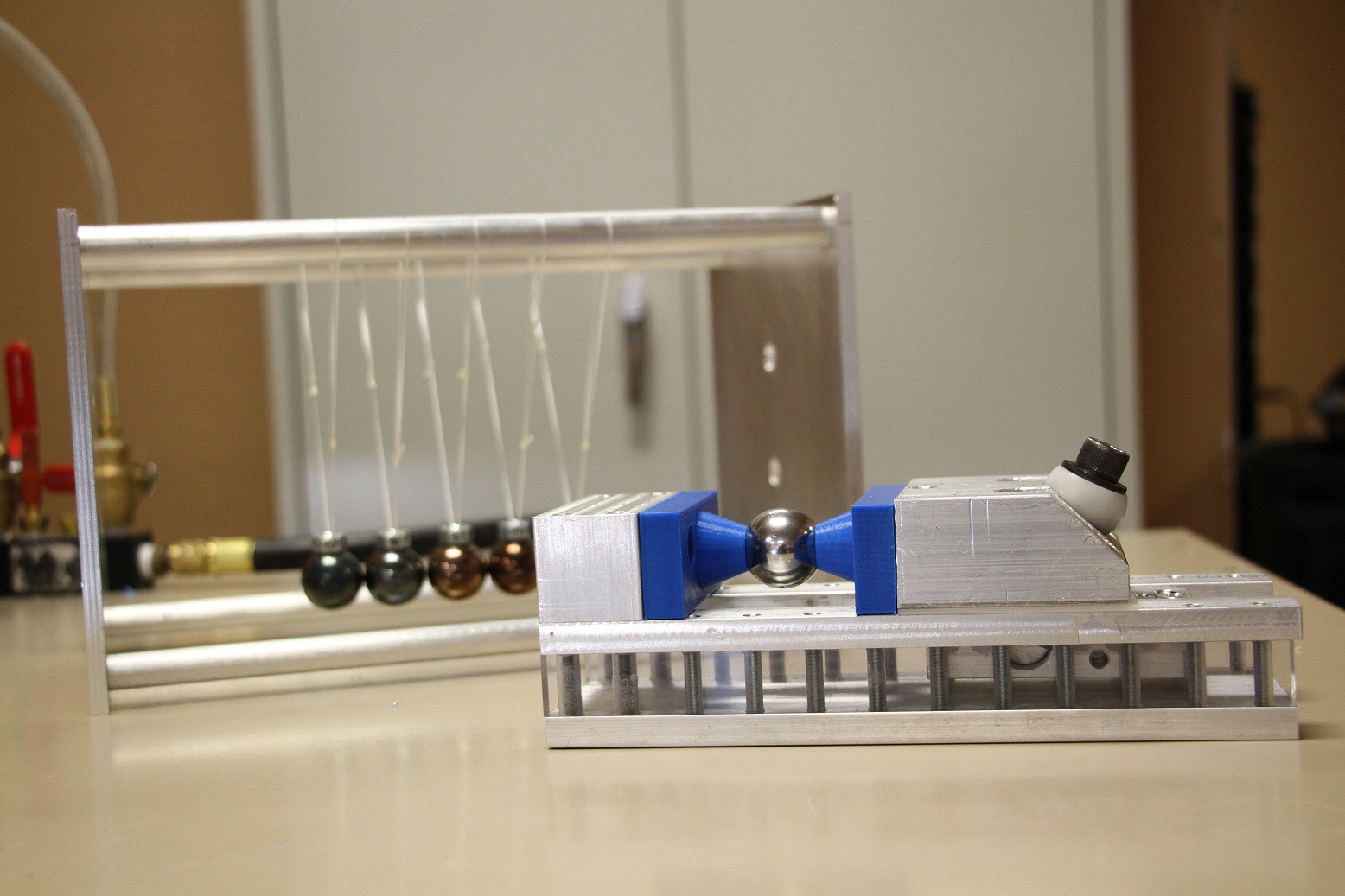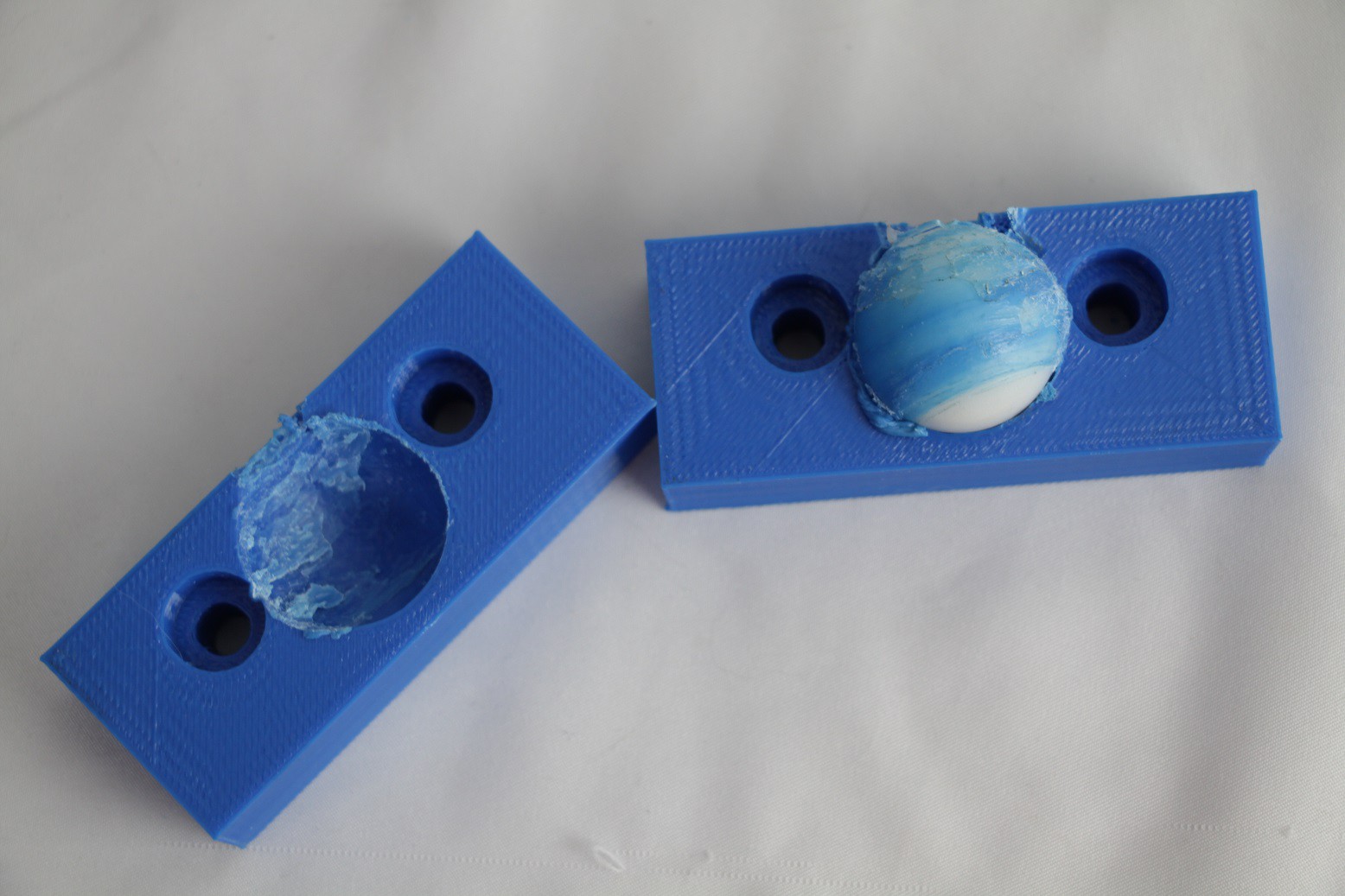-
Concept Art #3 [PCB Holder]
06/27/2017 at 07:42 • 0 comments![]()
I am excited about this application! There are too few options on the market ideal for electronics makers. The Maker's Vise is a relatively low positioned vise with many advantages for circuit building.
Light enough to be portable, yet heavy enough to be stable. It has soft jaws that won't damage your board. And, you can position the vise however you like:
![]()
-
Concept Art #2 (Conduit Cutting)
06/25/2017 at 21:34 • 0 comments![]()
There's a trick to cutting conduit without a vise. You pinch the conduit in the back of your knee as you kneel down to keep it steady as you cut. Though, it's terribly uncomfortable and after a few cuts.. I think you'll agree, it's better to cut conduit using a vise.
. Or, ideally, use a vise with custom jaws!
I spent more of my weekend making concept art. Check it out above! I apologize for the puns... I'm so sorry!
-
Concept Art [Ball Pincher]
06/25/2017 at 02:58 • 0 comments![]()
This is a concept design that I drew up this morning. Because sometimes you need a firm grip on your balls. And, well... custom jaws can get you there.
I will likely make more of these up in the future with different custom jaw ideas.
The aesthetics are likely to change. But, this is meant to be our "Kickstarter Edition" of The Maker's Vise. The aluminum would be colored green through interference coloring during the anodize process.. and then, we could surface-dye additional colors using a screen-print.
-
Portable Clamping Force Meter
06/25/2017 at 02:42 • 0 commentsA few weeks ago we were the measuring the clamp force of our vise collection from a load cell, through a data acquisition device.. and into our computer. I'm sure everyone was very impressed.
Today, we took the next logical leap and connected a portable digital meter to our load cell. This way, we are not bound to a location near our computer setup.
The Maker's Vise prototype 1 is still hanging in at 500 lbs of clamping pressure. We are working on a new design to increase this number. A significant portion of the vise was redesigned and requires manufacturing.
-
õ¿õ The Colors Man ... !!!!
06/21/2017 at 23:07 • 0 commentsHere is one reason why you are going to LOVE having an aluminum vise!
...
Products get smaller.. and, as makers we have begun bringing tools out from the garage and into our homes more and more. Because we love our homes, we now require our tools to be cleaner and looking nicer! Right?!!
Well,.. Here's the trick. Once anodized, aluminum becomes porous! This means we can use surface dyeing techniques to apply patterns.
Here are some initial ideas of how we can color The Maker's Vise:
1. Dip-Dye with Rainbow Fade.
![]()
2. Submerge Dye with logo as negative.
![]()
3. Stamped Dye
![]()
4. Screen-Printing
![]()
5. Sublimation Printing
![]()
Would you keep any of these on your desks?!
This has the potential to make our vise look really cool,.. but it will be a lot of extra work too! For this reason, we may only do the dying for our crowd-sourced production run that will hopefully happen in October. -
3D-Print Optimized Jaws
06/12/2017 at 19:22 • 2 comments!!! Our mechanical engineering consultant surprised us this morning with a new set of 3D printed jaws to test out!
You may have seen our original set of ball pinchers:
well.. there were a few problems.- low density (50% fill)
- print time (2+ hours)
- excessive material
- sensitive to print tolerance
Most of these solutions were solved by "cutting-the-fat." Any plastic that wasn't structurally relevant was removed from the design.
Which gave us these Mickey Mouse looking parts.. (non-affiliated, please don't sue us Disney)![]()
The ball-holder surface also underwent optimization. Rather than relying on a spherical divot to grip the ball, which is subject to fail if tolerances are off... the divot was made into more of a conic indentation. We were also able to make it to a 100% fill density.
As an added bonus, the conic divot allowed for the secure grasping of varying ball diameters. Like this 2" steel bearing: -
Clamping Force [Load Cell Test]
06/09/2017 at 23:53 • 0 commentsWe bought a 2,000 lb load cell to start testing the clamping pressure of our vise collection. And, to compare those vises with The Maker Vise prototypes 1 & 2.
First off.. we tested the clamping pressure of a popular hobby vise brand: Panavise
We used a copper cuboid block to reduce the risk of damaging our sensor. Then connected the load cell up to our computer for a measurement readout.
Let's see how our vise prototype stacks up?!
The Maker's Vise Prototype 1 reached approximately 500 lbs of reasonable clamping pressure. By 'reasonable clamping pressure,' I mean that we're not exerting ourselves to create higher clamping forces.
This does match what we would expect to see. About 1,000 lbs of clamping pressure split across the x and y axis. The downward pressure keeps the vise head from being tilted upward when clamping an irregular shaped object. ..i can see from the angle of the bolt that there is more force downward than actual clamping pressure.
-
Coloring Steel with Magnetism!
06/06/2017 at 18:34 • 5 commentsWe've got a special log for you today!
Alex is working on a neat miniature Newton's Cradle. This project included coloring 1" diam. steel ball bearings. By heating the bearing, an outer layer of colorful oxides form (actually ferrites!). Alex had been meticulously heating these balls with a set of tongs and a butane torch.
Then we thought to ourselves: "We can do this better!"
"Let's combine our current project: The Maker's Vise... with our super secret upcoming project: The Induction Forge. The steel will heat more efficiently and the oxides can form free from contamination."
We had to stand The Maker's Vise vertical, onto its own face. Then, we slid a 1" steel ball, held by a set of custom alumina jaws, between the ferrite poles of the magnetic induction forge WIP.
The result was pretty amazing [Video Below]! We could turn out thousands of these colored bearings with very little effort. This is why you need a quality vise w/ custom jaws people. Let's keep The Maker's Vise project going!!
-
Plastic Bearings Prevent Pivot
06/02/2017 at 18:11 • 0 commentsThe Delrin bearings are crucial for two reasons.
#1) Prevent metal-on-metal sliding... which eliminates the need for oil as lubrication.
#2) To prevent jaw pivoting when only one side of the vise is being used.
Here is what was happening:
That pivot is abhorrent and detracts from the overall grip strength. It is known, that you are supposed to compensate for this effect by clamping something of equal size on the other side of the vise.
...or, we can design the vise to prevent pivoting with this handy dandy bearing mod:
There! .. That should keep it from turning. It certainly slides nicely!
Let's test it out on that bolt again:
Hooray!! ..:: And the crowd goes wild ::..
-
Soft Jaw Update, What's working.. What's not..
05/25/2017 at 19:37 • 0 commentsToday, Alex and I were experimenting with 2 new types of 3D printed ball-holding jaw types for The Maker's Vise.
Let's start with what works:
Holding little metal ball bearings worked just beautifully! Very little pressure was needed to hold these balls securely in place. Even at full pressure, the plastic did not crunch-in at all! Everything works great.. Fantastic!
What didn't work:
This was my attempt at drilling though a Delrin ball with a hand drill. I drilled about halfway through the ball before the bit caught and started spinning it. The result was a ruined mess of melted plastic. Alex had warned me this wouldn't work.. and boy didn't it! Spectacular fail....
Edit: We have another idea to drill through balls that we'll test out in the future.
 Greg Stephens
Greg Stephens